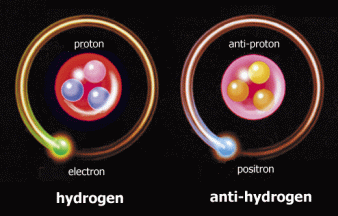
Theoretically it is possible to not only
have anti-atoms, but also anti-molecules, anti-objects, anti-organisms,
anti-people, anti-Earth, anti-universes. Antimatter doesn't
naturally exist on Earth, which is a good thing. When antimatter
and matter come in contact, they completely cancel each other out in an
explosion that converts 100% of their combined mass into
energy. This explosive contact is the problem Brown's characters
have to face as they race the clock and the bad guys.